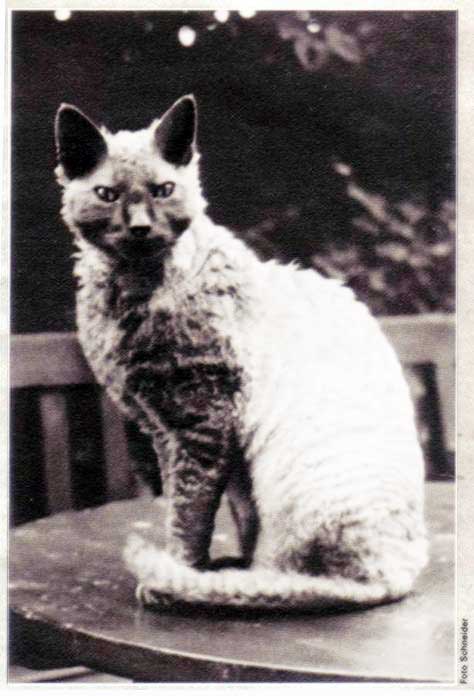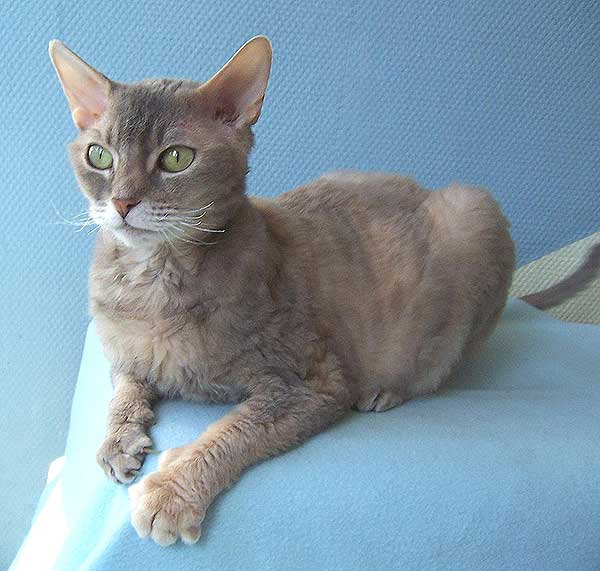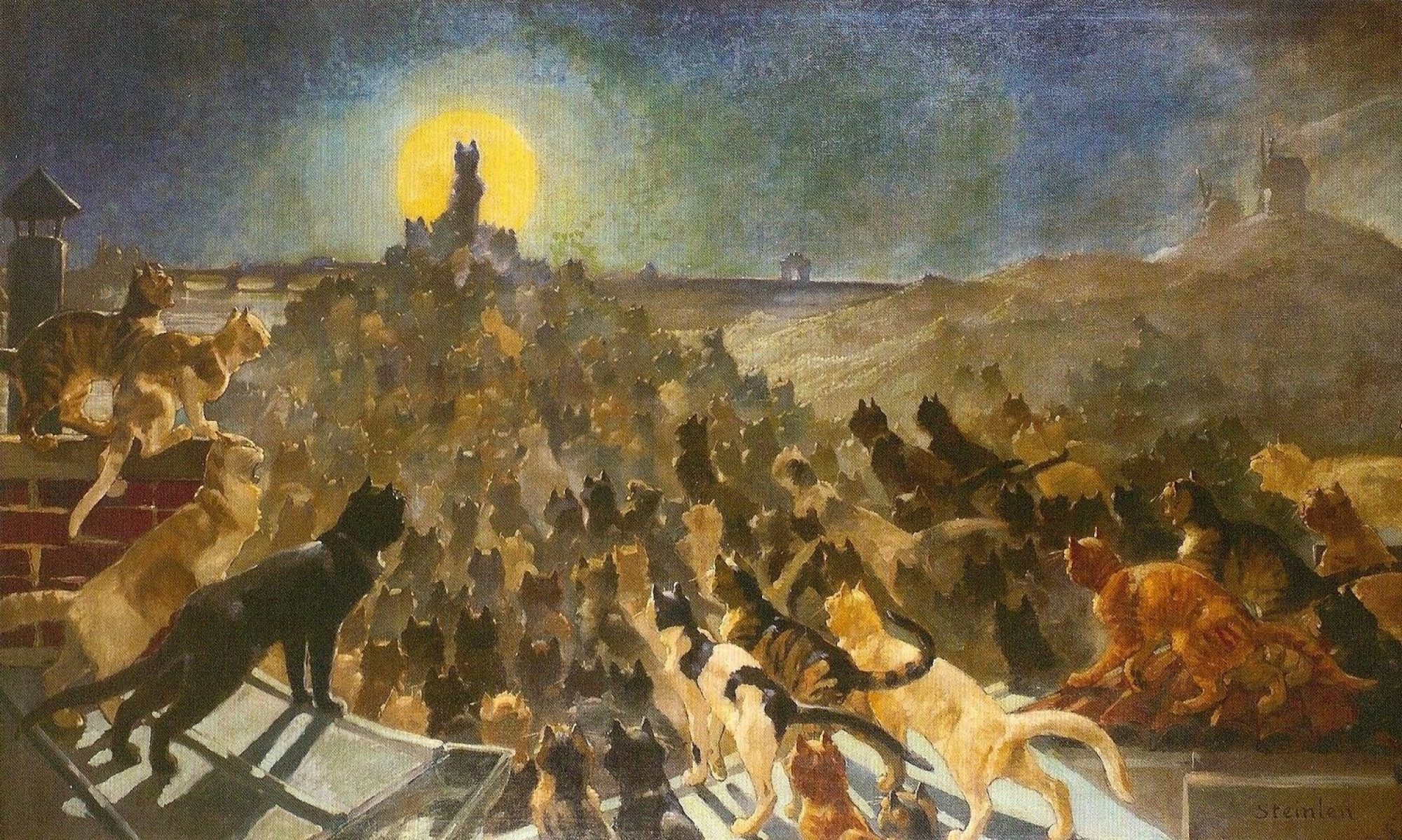Though the details are uncertain it is widely agreed that the curly coated German Rex is one of the oldest of the Rex cats. In around 1930 an ancestor of the modern German Rex breed was kept by a woman called Frau Erna Schneider in Konigsberg, Germany (Kaliningrad, Russia).
The name of this cat was Kater Munk and he was said to be the offspring of a Russian Blue and a mahogany coloured Angora.
Our cat Kater was then, the earliest recorded example of a Rex cat, and was referred to at the time as a Prussian Rex.
Cat of the Month ~ October 2018

It is accepted that the German Rex of today is a direct descendent of Kater Munk. Many cats of this type were bred from Munk in and around Konigsberg, until his death in 1945, but interestingly none of these offspring would have had curly fur – as the allele (genes) of Munk’s straight-haired mates would always dominate. The Schneiders nevertheless valued this strong tom cat with a talent for catching fish from the family’s garden pond.
Feline researchers do not generally consider Kater Munk to be related to the German Rex breed, and state that he was never bred from (this seems at odds with the other stories that he was a prolific breeder, Ed). Anyway, it was reported that in the summer of 1951 a black curly coated cat was noticed and taken in by Dr. Rose Scheuer-Karpin from the grounds of Hufeland Hospital in Berlin. The cat, was renamed Lammchen (little lamb) and subsequently went on to have several litters of kittens.
It was in 1956 that Dr Rose decided to mate Lammchen to one of her sons (Fridolin). This resulted in a litter of curly coated kittens. Some people have speculated that Lammchen is a descendant of Kater Munk, but we will never know the truth for certain. However Dr. Rose’ supposition that Lammchen must have been the result of a mutation, was shown to be correct. Thus, Lämmchen was the first breeder-owned Rex-type cat and the maternal ancestor of all the current German Rex cats.

Photograph: © catza.net
Today the descendants of Lammchen and Fridolin are the founders of the German Rex breed, though further cross breeding to other mixed breed cats has increased the gene pool considerably.
The German Rex is a medium-sized breed with slender legs of a medium length. The head is round with well-developed cheeks and large, open ears. The eyes are of medium size set in colours often related to the coat colour. The coat is silky and short with a tendency to curl of course. The whiskers also curl though less strongly than in the Cornish Rex. All colours of coat, including white, are allowed. The body development is also much sturdier than in the Cornish Rex.
On the whole German Rex are friendly creatures. They are lively, playful, and intelligent and bond with people well.
As already stated, it is not known how Lämmchen relates to Munk, only that the German Rex mutation (on the same gene as in the Cornish Rex) – is recessive, meaning it will only show when both alleles are “Rex”, and that Munk is the first thoroughly documented Rex cat. So Munk is almost certainly related to all German Rex cats in the world today.
Incidentally, there are four types of Rex breeds in existence, these are the German Rex, the Cornish Rex, the Devon and the Selkirk Rex.
References: Wikimedia Commons & Others

